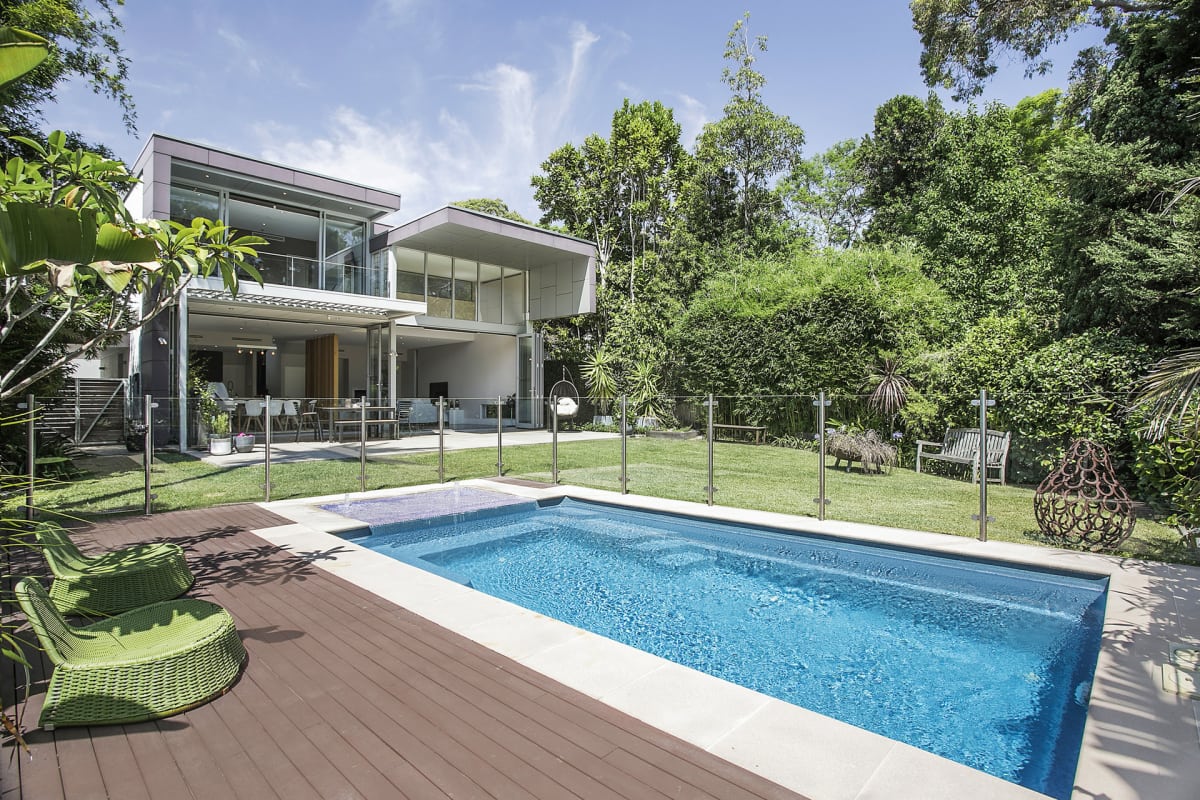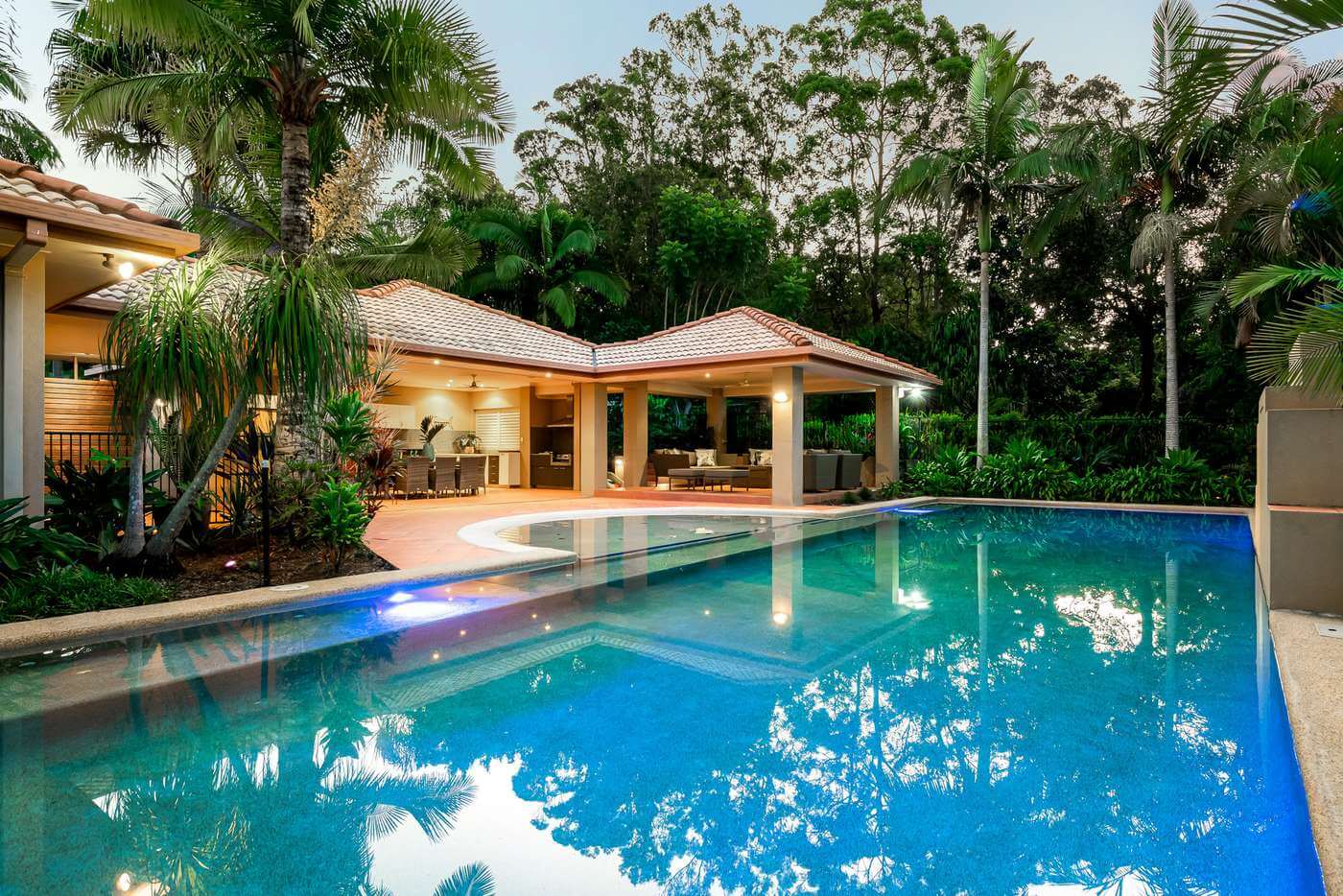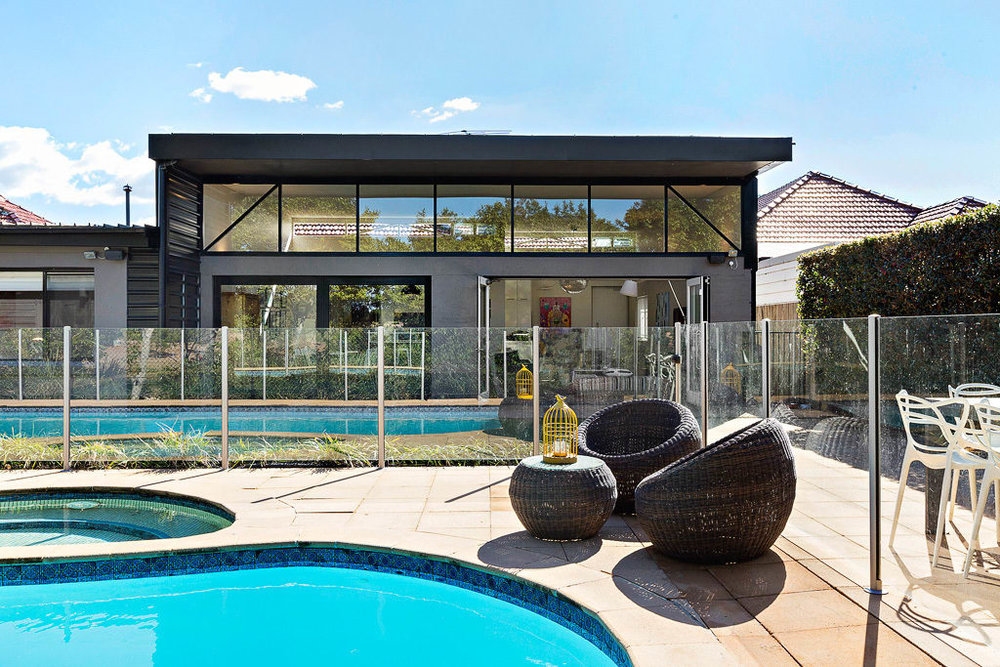Installing a swimming pool in your backyard can be a great decision for your relaxation, fitness and social life. Pools offer everyone a lot of enjoyment, especially kids.
If you decide to install a pool you’ll be faced with a number of different designs to choose from. When it comes to picking a pool it’s important to weigh up the pros and cons of different material in order to select the pool that best suits your needs.
If you’re after an in-ground pool, pool builders/certifiers will typically offer you a choice between three most popular and efficient in-ground swimming pool designs; concrete, vinyl-liner or fibreglass.
To assist you in the decision-making process we’ve outlined the various advantages, disadvantages and costs associated with each type of in-ground pool.
 87 Artarmon Road, Artarmon, NSW
87 Artarmon Road, Artarmon, NSW
Topics in this article:
Fibreglass
Fibreglass swimming pools are becoming increasingly popular. It is one of the most affordable types of in-ground pool. They look nice, are comparatively easy to install, and hold up well over time.
Benefits
- It’s quick to install- Most of the work of a fibreglass pool is done in the factory before it arrives on site. The pool installation can usually be completed in a week or two.
- Visually appealing surface- Some fibreglass pool manufacturers have invested a great deal of time and resources into creating stunning pool surfaces that truly enhance the overall look of the pool.
- Requires very little ongoing care- Unlike other pool surface finishes, fibreglass pools do not usually need resurfacing. In most cases, all that is required is basic care in accordance with the manufacturer’s guidelines to keep the pool in good condition.
 For sale: 63 Hilda Street, Alderley, QLD
For sale: 63 Hilda Street, Alderley, QLD
Drawbacks
- Shape/size limitations- Fibreglass pools are made in a factory mould and onsite, thus you will only have a few design choices. You can only choose from the fixed shapes the manufacturers provide. The sizes and shapes are limited.
- Potential for damage during installation- The structures are large; therefore, moving the pool around and over structures must be handled with great care. Most fibreglass pool damage occurs by inexperienced and clumsy builders during delivery and installation.
- Cost- Only one swimming pool can be constructed per day from a mould. The cost to construct a fibreglass swimming pool is higher than a vinyl liner structure because of the high cost of quality resins and fibreglass materials. A fibreglass pool shell can cost between $6,500 and $25,000 depending on its size. If you’d prefer an in-ground fibreglass pool costs range from $25,000 to $75,000.

Concrete
Concrete is one of the most popular pool materials. They offer a number benefits like durability and ease of customisation. Concrete swimming pools offer a huge variety with regards to the shape, size and design of the pool.
Pool builders throughout the world have been constructing wonderful and iconic swimming pool designs using concrete. Other types of pool materials such as fibreglass have become popular, but there is a reason that concrete pools are still number one.
Benefits
- Flexibility with design- You can build a concrete pool in any shape or design you want. Concrete pools are made on-site thus your pool builder can adjust the design to suit your site specifically.
- Aesthetics- New concrete pools look very appealing. There’s a range of surface finishes available from pebble to tile, depending on your preferences and budget.
- Strong- From a structural point of view they are very durable and strong.
 For sale: 92 Enoggera Terrace, Paddington, QLD
For sale: 92 Enoggera Terrace, Paddington, QLD
Drawbacks
- Build time- It can take three to six months of onsite work to complete the installation of a concrete pool. Other pool options can be finished in a few weeks or less.
- The initial cost, ongoing care and upkeep can be expensive- A regular-sized concrete pool (6m x 3m) can cost approximately $35,000. The average expenditure on concrete pools can reach up to $45,000 to $100,000 depending on the quality and size of the pool.
- Ongoing maintenance- There is a certain amount of ongoing maintenance required with a concrete pool. Quite a costly aspect of that maintenance is repainting or resurfacing your pool, which you need to do every ten to fifteen years.
- Surface finishes are rough underfoot- Concretes can be rough on bare feet and can cause scrapes and grazes.
Vinyl-liner
Vinyl-liner pools are popular in areas where the weather is cold. These pools can be easily ‘winterized’ by draining them and keeping them covered until spring.
Vinyl liner pools have a custom-made sheet of vinyl between the water and pool structure. It’s flexible and does not crack like concrete pools can over time. A vinyl line makes the surface of the swimming pool smoot and the pool can generally be installed within one to three weeks.
Benefits
- Low initial cost- Vinyl liner pools are more affordable to install than fibreglass or concrete pools. This allows many pool owners to enjoy the benefits of a large in-ground pool without blowing their budget. In most cases, vinyl liner pools cost from $5,000 to $10,000 depending on the size and shape of the pool.
- Customizable shape- It’s possible to customise the size, shape and depth of a vinyl pool. Custom shapes will be expensive, but would still cost less than your average fibreglass or concrete pool.
- Easy maintenance- Liner cleaning and replacement are quick. It can be completed in a day or two without any heavy equipment.
 Image: Doyle Pools
Image: Doyle Pools
Drawbacks
- Consider lifetime cost- The average life of a vinyl liner is between five and seven years. So factor in replacement expenses into your budget.
- Have to use care with the pool liner- While liners are made of a durable material, sharp objects, pets and patio furniture falling in the pool and damaging the vinyl surface are all concerns. Although its sanitised treated finish resists the growth of algae, fungus and bacteria, it is still vulnerable to damage from objects.
- May not work on certain sites- If the site has a major slope or groundwater present, a vinyl liner may not be possible for safety and practical reasons.
 For sale: 13 Haigh Crescent, Samford Valley, QLD
For sale: 13 Haigh Crescent, Samford Valley, QLD
When considering which swimming pool to choose, it’s always important to consider the design, shape, size and cost. There are different kinds of swimming pools that each have their own advantages and disadvantages. Thus, choosing the swimming pool that best suits your needs is a must.
After the swimming pool is selected and installed properly, you’ll need to make sure your swimming pool is safe and compliant with your local pool fence regulation, so you can avoid penalty from your local council and most importantly, your family and enjoy the newly built swimming pool safely.





